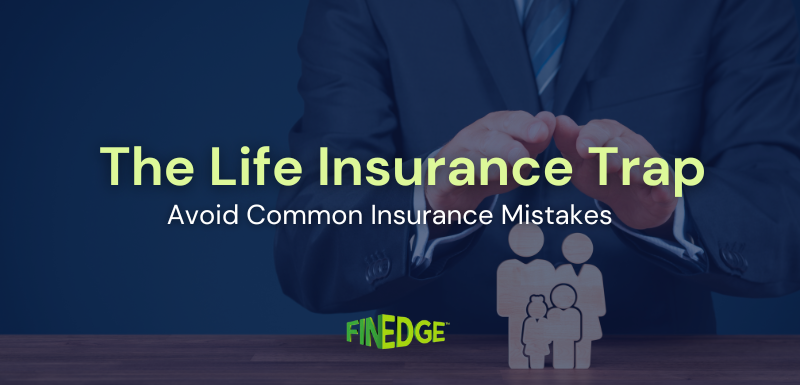Investing Your Retirement Corpus Wisely: What to Do and What to Avoid
- Retirement mistakes are often avoidable, but costly when ignored.
- Starting late, ignoring inflation, and planning without structure are key risks.
- A well-thought-out strategy can prevent regret and ensure future stability.
Retirement planning isn’t about picking the perfect product. It’s about building a structured roadmap that reflects your lifestyle, income needs, and long-term priorities. Yet, many investors delay it or make decisions without enough clarity. These mistakes may not show immediate consequences, but they often lead to shortfalls, stress, and financial insecurity in later years.
Common Mistakes in Retirement Planning
Let’s explore the most common mistakes people make while planning for retirement, and how they can be avoided.
Importance of Early Retirement Savings
One of the most frequent mistakes is assuming that retirement planning can wait. The later you start, the more you need to invest every month to reach the same goal. Starting early allows compounding to work in your favour and reduces the pressure on your future income.
Even small amounts invested early can lead to a significantly larger corpus than larger contributions made closer to retirement. Delays often result in cutting corners on goals or taking on excess risk to catch up later, both of which are avoidable.
Ignoring Inflation
Planning without factoring in inflation is one of the most underestimated risks. What seems sufficient today may not meet your needs 20 or 30 years from now. For example, a lifestyle that costs Rs. 50,000/month today may require over Rs. 1 lakh/month post-retirement.
Ignoring inflation can result in a corpus that looks adequate on paper but falls short in real life. A solid retirement plan should project costs realistically and adjust the investment strategy to match inflation-adjusted targets.
No Clear Withdrawal Strategy
Saving is only half the journey, how you draw down your corpus matters just as much. Many investors enter retirement without a structured withdrawal plan, leading to poor liquidity management and potential erosion of capital.
Tools like Systematic Withdrawal Plans (SWPs) can provide regular income, maintain investment continuity, and offer tax efficiency. Planning these in advance can help align cash flows with monthly needs while keeping the rest of your capital invested wisely.
Overdependence on Traditional Products
Bank FDs, EPF, and NPS are commonly used for retirement savings, but relying solely on them can be risky. These instruments often lack flexibility, and their post-tax returns may struggle to beat inflation.
A diversified investment strategy, combining mutual funds, SWPs, and low-risk debt instruments, ensures better balance between safety, liquidity, and growth.
Emotional Investing Near Retirement
Investors nearing retirement sometimes become overly cautious or react to short-term market volatility. Either extreme, panic-driven selling or clinging to "safe" low-return assets, can limit the effectiveness of your retirement plan.
Retirement planning should involve periodic portfolio reviews to realign your strategy with your goals, not with market noise. Staying objective is key, and that’s where expert support makes a big difference.
How and Where Should You Invest Your Retirement Corpus?
Retirement planning doesn’t end when you build the corpus. Deploying it smartly is just as important. One of the most effective approaches is the 3-Bucket Strategy:
1. Liquidity Bucket: Covers 1–2 years of immediate needs (monthly expenses, health emergencies, ad hoc spending). Instruments include savings accounts, liquid funds, and any reliable cash inflows.
2. Safety Bucket: Covers 3–5 years of mid-term needs. Invested in low-risk products like FDs, short-term debt funds, and hybrid funds for stability and moderate growth.
3. Growth Bucket: For long-term growth or legacy planning. Invested in equity mutual funds, stocks, or real estate, ideally for goals 7+ years away.
Lack of Professional Guidance
DIY investing has its place, but retirement planning involves complex, long-term decisions. Many investors don't have the time, tools, or perspective to build a strategy that covers all variables: income, inflation, taxation, risk appetite, and longevity.Working with a trusted investment manager ensures that your plan is structured, monitored, and adjusted with your changing life circumstances. At FinEdge, we don’t sell products, we help build personalised, goal-based retirement strategies through our DiA platform.
FAQs
Your Investing Experts
Continue Reading
The Impact of Inflation on Your Retirement Plan
Inflation doesn’t feel alarming month to month, but over 25 years it can completely reshape your retirement needs. Planning with inflation in mind ensures your future lifestyle remains as comfortable as it is today.
Financial Planning Before and After Retirement India: A Complete Guide to Building & Managing Your Retirement Life
Planning for retirement is not just about saving, it’s about understanding how your needs evolve. Financial planning before and after retirement India requires two different skill sets: building your corpus before retirement and managing it wisely afterward so it lasts 25–30 years.
Beware of the Life Insurance Trap
Many life insurance buyers mistake savings for protection. Here’s how to spot common mis-selling traps and ensure your policy truly secures your family’s future.
.png)
.png)

